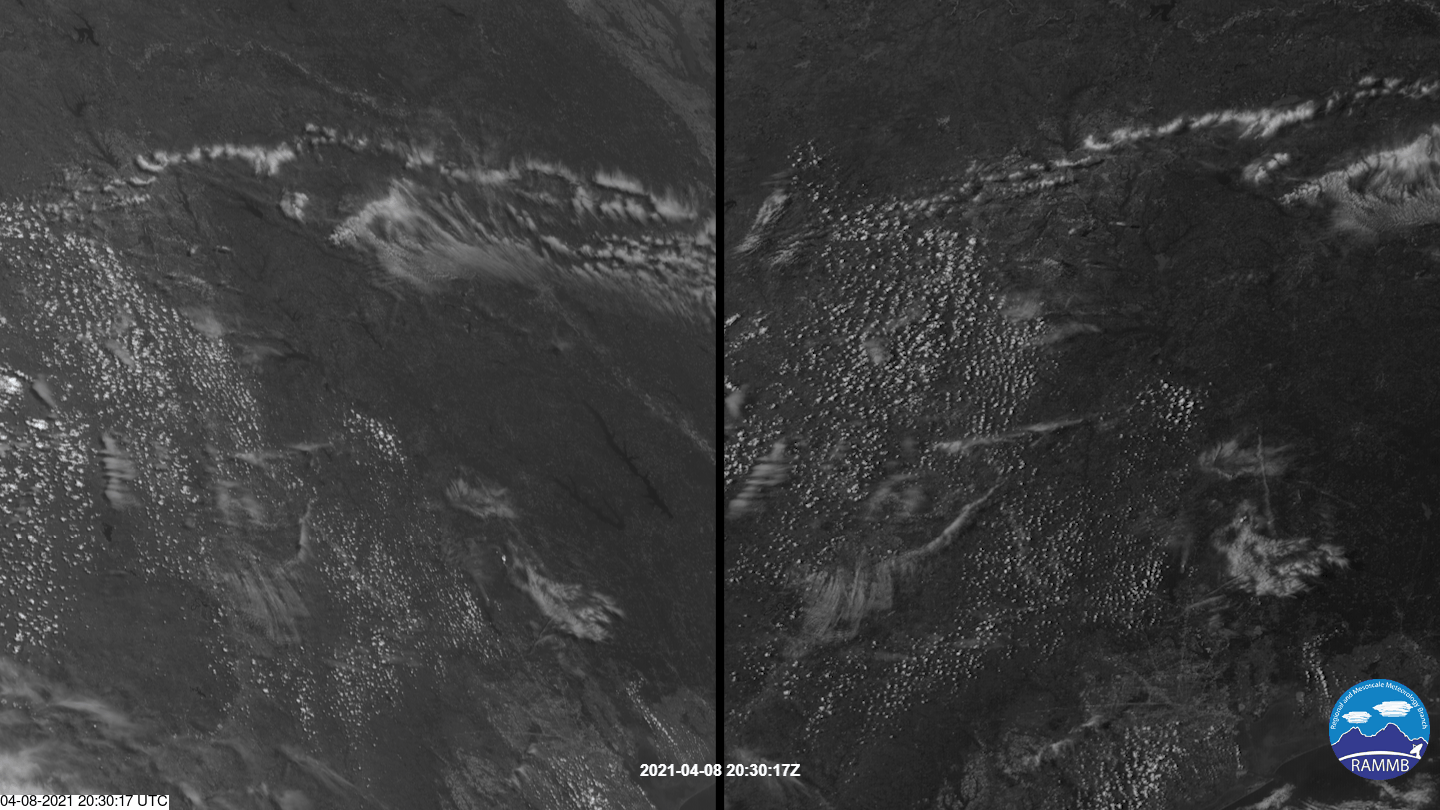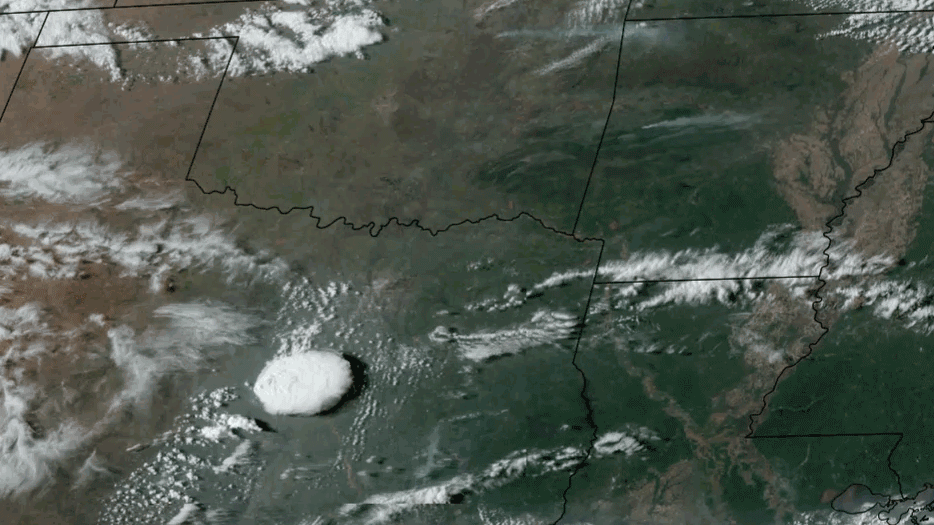
Both GOES West (left) and GOES East (right) saw an isolated, or discrete, supercell storm burst over East Texas’ flatland on the evening of April 8, 2021. The Advanced Baseline Imagers on both satellites detected what is called an “above anvil cirrus plume” via the highly-detailed visible band. This is where a thunderstorm’s updraft is so powerful it penetrates Earth’s stratosphere and injects moisture into this very dry and stable layer.
The physical characteristics of the supercell are particularly interesting—its long shadow, as well as the size of the plume itself, made for impressive imagery. Another view of this supercell, as seen below in the GeoColor imagery from GOES East, shows how it appeared to the naked eye. According to Dakota Smith, a meteorologist and imagery specialist with CIRA : “When these plumes are seen, it's more likely that the storm creating them is severe.”

GOES East imagery in GeoColor, April 8, 2021. Courtesy of CIRA.
NOAA’s Storm Prediction Center reported hailstones up to the size of baseballs falling in different parts of East Texas on April 8th. Severe thunderstorms and winds also snapped trees and caused structural damage in Troy, Texas.
The GOES East and West geostationary satellites, also known as GOES-16 and GOES-17 respectively, keeps watch over most of North America, including the continental United States and Mexico, as well as Central and South America, the Caribbean. Together, their range stretches from the Atlantic Ocean to the Pacific, and from the west coast of Africa to the eastern shores of Hawaii. The satellites’ high-resolution imagery provides optimal viewing of severe weather events, including thunderstorms, tropical storms, and hurricanes.
Imagery courtesy of CIRA, a multidisciplinary cooperation between NOAA and Colorado State University.